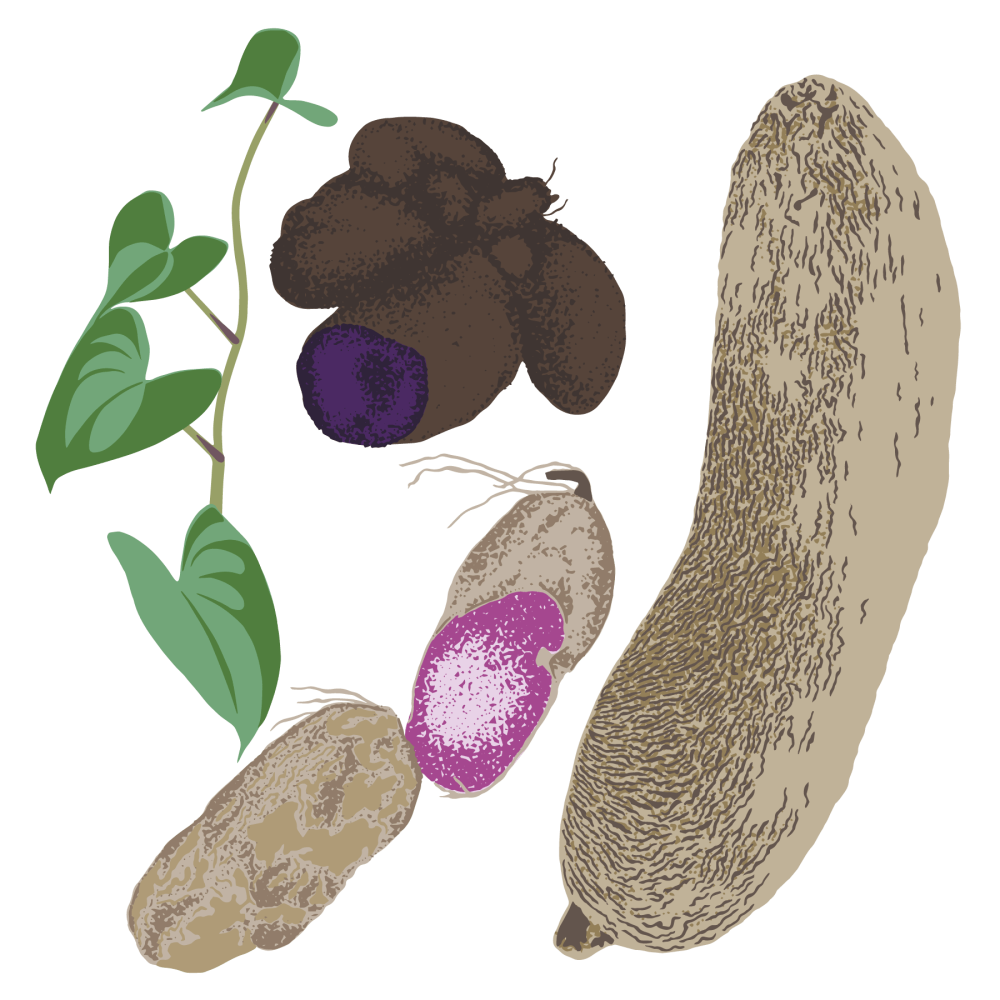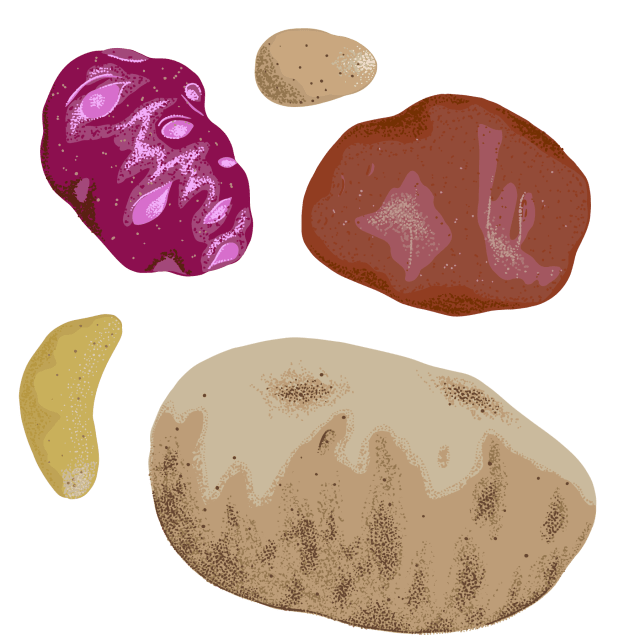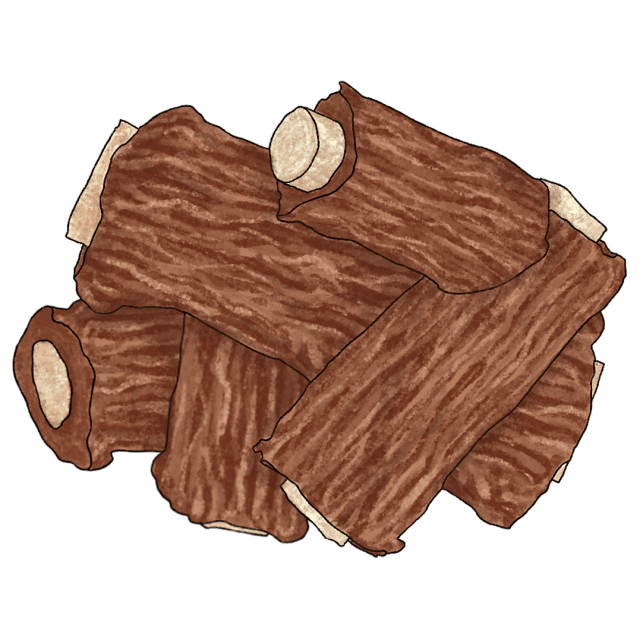Yam

Latin name: Dioscorea spp.
Other names: ube, ñame, yamaimo, nagaimo
Uses: root vegetable
What are yams?
Not to be confused with sweet potatoes (which are in an entirely different plant family), yams consist of a dozen or so species of wild and cultivated tubers in their own family. The most commonly cultivated species are ñame, used throughout West Africa and considered the most important cultivated yam species; ube, used throughout Asia and the Pacific Islands; and cush-cush or yampee, used throughout South America and the Caribbean. Depending on the species or variety, the flesh can be purple, pink, yellow, or white.
Why are yams healthy?
Like sweet potatoes, yams are excellent sources of fiber, complex carbohydrates, and B vitamins. They are considered moderate on the glycemic index, supporting a slow rise in blood sugar and prolonging satiety. Studies suggest yams can improve brain function, reduce inflammation, improve digestive health, and provide sustained energy.
What do yams taste like?
Like all root vegetables, yam has an earthy, sweet flavor, with flesh less sweet and starchier than a sweet potato. Ube has purple, nutty-sweet flesh with hints of vanilla, similar to Okinawan sweet potato (which is not a yam). Nagaimo and yamaimo (mountain yams used in Japan) have a mildly sweet favor and slimy, mucilaginous texture when grated raw.
How do I use yams?
Like other starchy tubers, yams are typically fried, roasted, boiled, or mashed. They’re usually treated much like plantains or cassava: an inexpensive source of carbohydrates, ready to soak up other flavors, and used as an edible utensil like fufu. You can treat yams like potatoes and draw inspiration from West African and Caribbean flavor profiles — use yam in complex, oily stews spiked with plenty of spices, ginger, and chile.
What do yams pair well with?
Ube’s nutty-vanilla sweetness (and vibrant purple color) pairs best with flavors like toasted coconut and pandan. It’s a natural fit for cakes, puddings, and sweet breads, which is how it’s primarily used in Asia and the Pacific Islands. In the Philippines mashed ube is mixed with sweetened condensed milk, evaporated milk, and/or coconut milk to make halaya — use this to add flavor to pancakes, ice cream, fruit parfaits, or even lattes. Two other Asian yam species, nagaimo and yamaimo, are used as a condiment for soba or for adding tender fluffiness to okonomiyaki (a savory cabbage pancake); you can use them interchangeably.
Where do yams grow?
Though two wild species still exist in the tropics of Africa and the mountains of East Asia, the three primary cultivated yam species were independently domesticated in Asia, West Africa, and South America (and Caribbean) millennia ago. Today, the vast majority of the world’s yam crop is grown and consumed in West Africa; ube is still a staple crop of Austronesia and Island Southeast Asia.
How to buy yams:
Look for fresh yams that are firm and heavy for their size, with no mushy spots or sprouts.
Fun yam fact:
Igbo and Ashanti people in West Africa celebrate the New Yam Festival, a holiday that welcomes the season’s first yam harvest at the end of the rainy season (early August in Nigeria and September-December in Ghana). Like East Asian Mid-Autumn Festivals, the New Yam Festivals are community celebrations, marking the turning of seasons.





